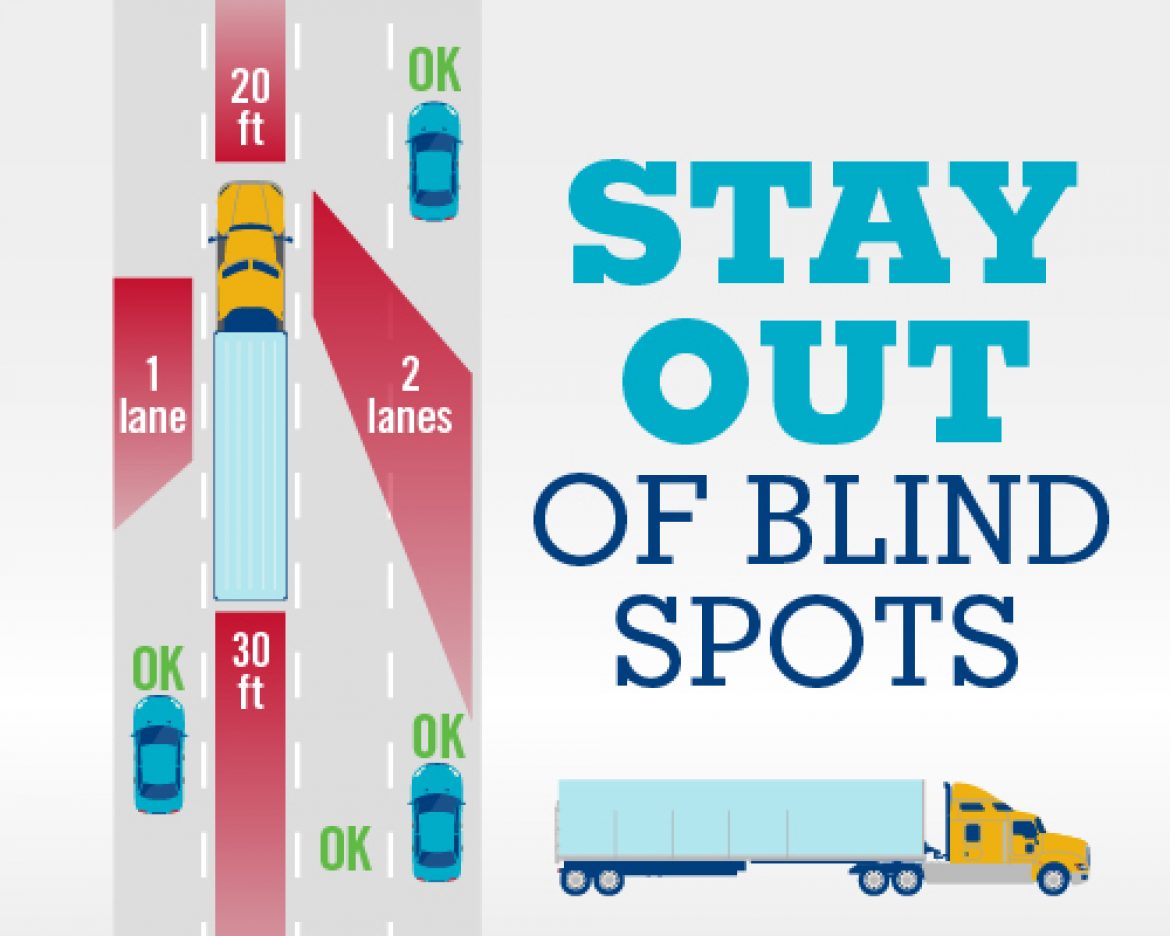Stay Out of Blind Spots for Safer Driving on Macon’s I-16

Large trucks, tractor trailers, big rigs and semis make up 4% of all registered vehicles in the US, and yet they are involved in 8% of all fatal crashes, with approximately 4,000 people killed each year. It is important to know how to respond if you’re in an automobile accident, but prevention is the ideal solution.
Many drivers are unaware of how large the four blind spots of an 18-wheeler really are. When you limit your time in a truck’s blind spots, also called “No Zones,” you significantly improve your chances of avoiding accidents with large trucks. Read the safe driving tips below to enhance your safety and help avoid an accident on I-16 and other highways around Macon, Warner Robins, Dublin, and the surrounding areas in Middle Georgia.
The Truck’s Right Side is the Most Dangerous Blind Spot
The largest blind spot for large trucks is on their right. This blind spot extends right two or three lanes all the way to the back of the truck. By far, this is the most dangerous place to pass a large truck or to maintain the same speed. For the whole length of the semi, the driver is unable to see you. Speed up or slow down so that you are not side-by-side with the 18-wheeler for any longer than necessary.
Allow Plenty of Room in the Front & Back
Despite a large truck’s height, the driver has severely limited sight capabilities in front of and behind the truck. Blind spots extend approximately 30 feet behind a large truck and 20 feet in front. When behind a truck, it’s best if you can see the truck driver in their left side mirror; they can most likely see you, too. Otherwise, you’re following too close.
When you are in I-16 traffic, it often is bumper to bumper. If the driver in front of you is in a car, suv, or pickup, they likely have a back window and rear view mirror through which they can see you behind them. With a semi truck and trailer, the driver’s only way to see behind themselves is through the side mirrors. Bear this is mind the next time you are stuck in I-16 traffic.
Pass Large Trucks on the Left Side
Passing on the left side of a large truck is your safest choice because it is the smallest of the truck’s four blind spots. Also, truck drivers anticipate being passed on the left.
Take Caution When Merging in Front of a Truck
If you plan to merge in front of a truck, remember that the truck driver has no front visibility for approximately 20 feet. Put plenty of room between your vehicle and the front of the truck, and signal well in advance. Never decelerate immediately after pulling in front of a truck. Also, keep in mind that trucks speed up when going downhill, so plan accordingly to stay in another lane or allow even more room between the two of you.
If you’ve been involved in an accident with a large truck or any auto accident on I-16, the Macon auto accident attorneys at Buzzell, Welsh & Hill can help fight for the compensation you deserve. We will pursue all available forms of compensation, including payment for medical expenses, lost wages, as well as pain and suffering. Schedule a free consultation today by contacting us online or calling (478) 217-2072.
Image used with permission from the Federal Motor Carrier Safety Administration.
